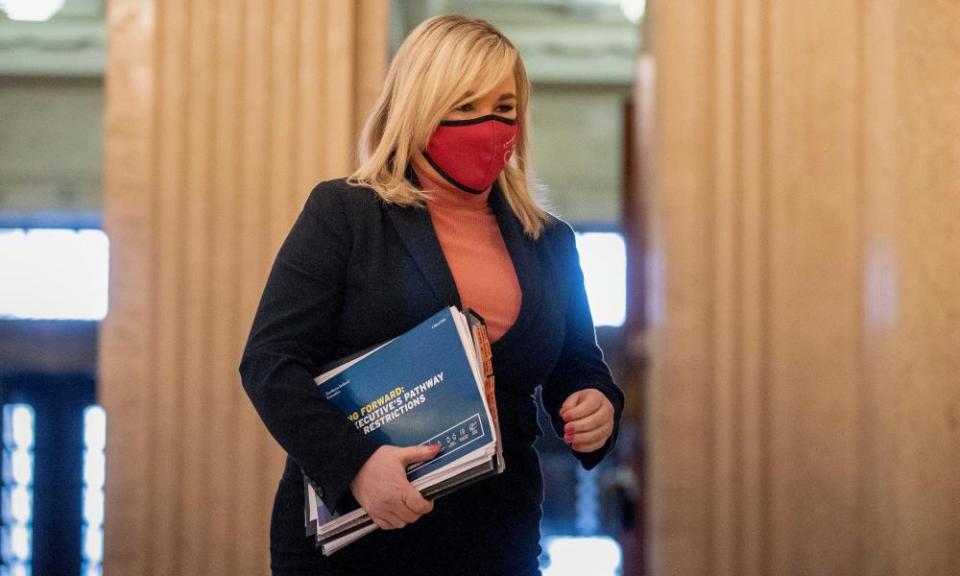Northern Ireland announces cautious five-step plan for Covid lockdown easing

Northern Ireland’s deputy first minister, Michelle O’Neill, has announced a cautious five-step plan to ease the region’s Covid-19 lockdown.
She told the Stormont assembly on Tuesday that the plan has no hard dates and will be led by data, notably the reproductive rate of the virus.
The power-sharing executive signed off on the strategy earlier on Tuesday after days of intensive talks between party leaders and health officials.
The 28-page plan, titled Moving Forward: The Executive’s Pathway out of Restrictions, is a “careful, cautious and hopeful approach”, O’Neill told the chamber. “Our aim is to find a safe, secure and sustainable way forward for our citizens and businesses.”
Related: Northern Ireland’s five steps out of Covid lockdown: key points
The plan envisages a five-stage process moving from lockdown to relaxation of restrictions for nine different sectors. There will be regular reviews in the middle of March, April, May and June but no set timetable for progressing to each stage, said O’Neill.
“These should not be viewed as dates on which we will move to lift certain restrictions; rather, they are appropriate dates … to examine all relevant indicators. We do not want to set potentially unachievable dates which will only disappoint.”
Scotland’s plan, unveiled last month, also eschewed a timetable, unlike England’s, which included dates.
O’Neill, who is Sinn Féin’s Northern Ireland leader, said the plan would protect the health service. “We must do everything we can to try to make this one the last lockdown.”
Each week government departments will pool and analyse information, she said. “After each step we take, we will pause and reflect, look at the data and the impacts, engage with key sectors and enable them to reopen only if it is the right thing to do.”
The first step in the plan represents the current lockdown, with ensuing steps permitting progressive relaxations in household mixing and the economy.
The plan is a compromise between the Democratic Unionist party (DUP), which has chafed at lockdowns, and Sinn Féin, Alliance, the SDLP and the Ulster Unionist party.
The DUP last week sought to accelerate the reopening of schools in line with England’s plan for all pupils to return on 8 March, prompting a veiled rebuke from Northern Ireland’s chief medical officer, Michael McBride.
“There is a significant risk at this point in time if we move back … too quickly or too rapidly that we will see a resurgence in cases that could result in a further wave of infection which could be even greater than the numbers we saw back in January,” he said.

 Yahoo Finance
Yahoo Finance 